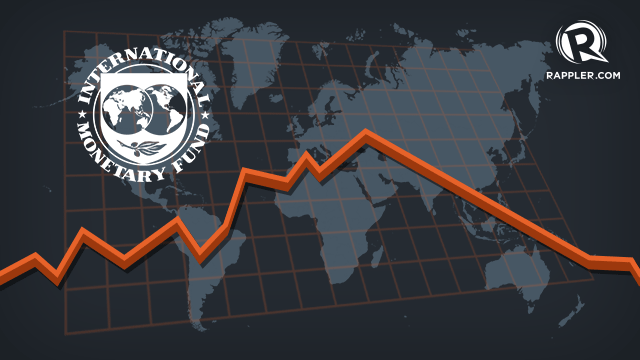SUMMARY
This is AI generated summarization, which may have errors. For context, always refer to the full article.

MANILA, Philippines – The International Monetary Fund (IMF) has lowered its economic growth forecast for the Philippines in 2016 and 2017, dragged by higher global financial volatility and weather-related disruptions.
Although the IMF sees the country performing “remarkably well,” it trimmed its Philippine gross domestic product (GDP) forecast for 2016 and 2017 to 6% and 6.2%, respectively.
The new GDP projections for the Philippines come amid the IMF visit in Manila from February 11 to February 17.
IMF Assistant Director for Asia Pacific Chikahisa Sumi met with the governor of the Bangko Sentral ng Pilipinas (BSP), the secretaries of the economic cluster, senior government officials, private sector representatives, and the financial community.
“The economic outlook is favorable but subject to increased downside risks, including lower growth in China and the region, higher global financial volatility and capital outflows, and weather-related disruptions,” Sumi said in a statement.
But driven by continued strong domestic demand, IMF sees the Philippines to offset weak net exports.
Strong fundamentals
In 2015, the unemployment rate fell to a decade low of 5.3%, but significant under employment remains.
Inflation fell to 1.4% in 2015, below the inflation target range, due to lower food and fuel prices.
“The Philippine economy has performed remarkably well in the face of a weaker external environment and global financial turbulence in 2015,” Sumi said.
Despite a large drag from net exports, Philippine GDP growth remained robust in 2015 at 5.8%, reflecting a strong pickup in private investment and public construction through the year.
For the IMF, the Philippines’ external and fiscal positions remain comfortable.
Despite a sizable decline in the fuel import bill and continued strong business process outsourcing inflows, Sumi said the current account surplus is estimated to fall to 3% of GDP in 2015 from 3.8% in 2014, due to sluggish exports and remittances.
This is likely to narrow further in 2016, Sumi said.
For Sumi, “the Philippines’ capacity to respond if global risks materialize is substantial given its ample reserves and policy space, both monetary and fiscal.”
Credit growth slowed to 13.1% in 2015.
“[This] is supportive of financial stability and sustainable growth as private credit to construction and real estate has moderated,” the IMF official said.
Monetary policy has remained on hold since late 2014, with the continued strength of domestic demand and inflation falling below target range due to temporarily lower commodity prices.
“[G]oing forward, a continued focus on raising tax revenue would be important to address the large infrastructure and social needs,” Sumi said. – Rappler.com
Add a comment
How does this make you feel?
There are no comments yet. Add your comment to start the conversation.